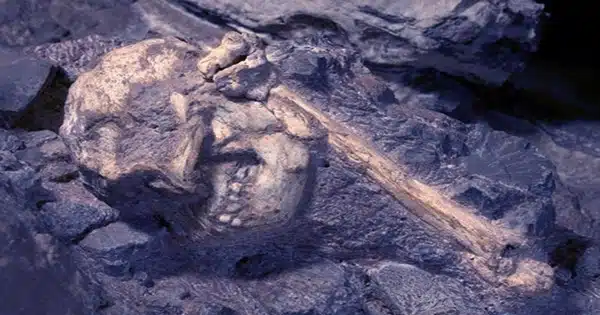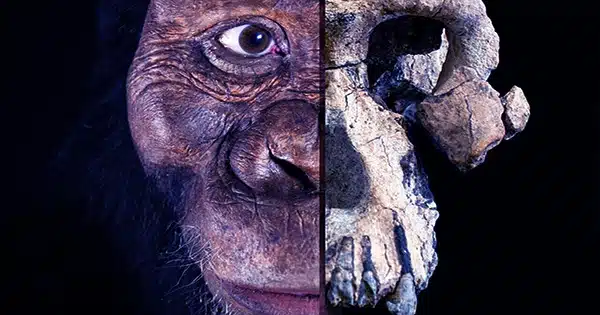Africa has long been thought to be the cradle of humanity, with people descended from apes on the continent before spreading to the rest of the world. However, an unexpected discovery is contradicting the long-held belief.
A new ancient ape’s half-skull has been unearthed in Turkey, and it appears to predate African apes, implying that human origins may actually be in Europe.
The Anadoluvius turkae fossil was discovered in Cankiri, a city about 86 miles northeast of Ankara, and is considered to be 8.7 million years old.
Early hominins, which include chimps, bonobos, gorillas, humans, and their fossil relatives, were not seen in Africa until about seven million years ago.
It implies that African apes and humans evolved in Europe before moving south between 9 and 7 million years ago.

“Our findings also suggest that hominins not only evolved in western and central Europe but spent over five million years evolving there and spreading to the eastern Mediterranean before dispersing into Africa, most likely as a result of changing environments and diminishing forests,” said Prof David Begun of the University of Toronto’s Department of Anthropology.
“These findings challenge the long-held belief that African apes and humans evolved solely in Africa.”
“This new evidence supports, but does not prove, the hypothesis that hominins originated in Europe and dispersed into Africa with many other mammals between nine and seven million years ago.”
“For that, we need to find more fossils from Europe and Africa that are between eight and seven million years old in order to establish a definitive connection between the two groups.”
Out of Africa: The well-preserved skull was discovered in 2015, but its actual significance is just now becoming clear to scientists.
Researchers believe Anadoluvius was about the size of a female gorilla, weighing roughly 12 stone (76lbs), lived in a dry jungle, and spent a lot of time on the ground.
Experts discovered giraffes, warthogs, rhinos, various antelopes, zebras, elephants, porcupines, hyenas, and lion-like carnivores beside the skull in the same fossil stratum.
All of the creatures that are usually associated with African grasslands and dry forests nowadays.
Experts assume that this biological group moved into Africa from the eastern Mediterranean some eight million years ago.
“The origins of modern African open country fauna from the eastern Mediterranean have long been known, and now we can add the ancestors of African apes and humans to the list of entrants,” stated Professor Ayla Sevim Erol of Ankara University’s Department of Anthropology.
“We lack limb bones, but based on its jaws and teeth, the animals discovered alongside it, and geological indicators of its environment, Anadoluvius most likely lived in relatively open conditions, as opposed to the forest settings of living great apes.”
“More like what we think early human environments in Africa were like.” The strong jaws and massive, heavily enameled teeth indicate a diet rich in hard or rough food from terrestrial sources, such as roots and rhizomes.”
Missing branch: According to the researchers, the data identify Anadoluvius turkey as a branch of the evolutionary tree that gave rise to chimps, bonobos, gorillas, and humans.
The line that would lead to humans split from apes somewhere between 9.3 million and 6.5 million years ago.
However, not all scientists are convinced, and some argue that the discoveries do not undermine the hypothesis that the first humans evolved in Africa before expanding elsewhere.
“This has been a long-running debate regarding great apes and our origins,” said Prof Chris Stringer, research leader in human evolution at the Natural History Museum in London.
“I don’t think this finding changes much from the discussions (in a recent paper in the journal Science), which concluded: ‘Current evidence suggests that hominins originated in Africa from Miocene ape ancestors, unlike any living species.'”















